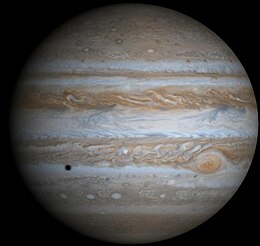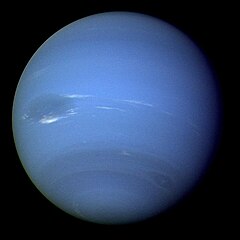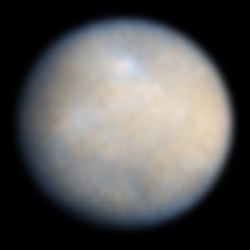
The Planet Jupiter. It just reached opposition yesterday.
There are several Astronomical events and objects worthy of note at this particular time: the opposition of Jupiter, with its wonderful moons, Mercury at its point of Maximum Western Elongation from the sun, along with prime viewing of Uranus, Neptune, (1) Ceres, and 4 Vesta. I end with a piece of music by the discoverer of the planet Uranus, who had been a musician by trade! I guess I should mention that Venus and Saturn are easily visible in the morning right now, as well, in the same Constellation, Libra, with Mercury!

A diagram demonstrating, amongst other things, a planet's position at opposition -- note carefully the very bottom of the diagram! To the right of the Sun, you also see the position of a planet at Greatest western elongation.
Yesterday, 2 December 2012, marked the point of the planet Jupiter's opposition. Opposition occurs when a planet is directly opposite the Earth from the Sun, making it the equivalent of a full moon for a planet. In other words, now, while Jupiter sits in the Constellation Taurus, is the best time to view the largest of the planets in our Solar System.

The Galilean Moons, from top to bottom: Io, Europa, Ganymede, and Callisto. This photo is a montage, comparing the fours moons in size to Jupiter.
Of course, if you look at Jupiter in a telescope, and now is prime-time viewing, you must note the Galilean Moons. These four moons, Io, Europa, Ganymede, and Callisto, appear as four points of light in a straight line on either side of the gas giant. Here is a link to a great resource noting which moon is where as their whirl about mighty Jupiter: http://www.skyandtelescope.com/observing/objects/javascript/jupiter

The planet Mercury as viewed from MESSENGER.
Tomorrow, 4 December, Mercury will reach its point of Greatest western elongation. That means that Mercury will, from the perspective of the Earth, but its farthest from the Sun -- a mere 23 degrees away -- but that means it is the easiest time to actually spot the fastest planet. Western elongation actually means that dawn, just before the Sun rises, one should look for Mercury in the Constellation Libra. The Constellation, which also contains Venus and Saturn at this point, may not be visible, but these three planets should be, lined up -- Mercury, Venus, Saturn, from the horizon moving up!


The outermost Gas Giants of the Solar System, Uranus to the left and Neptune to the right.
With the Constellations Aquarius and Pisces rather high in the early evening sky, now is also a rather good time to try to find two other, rather faint, gas giants, Uranus and Neptune. Uranus, in Pisces, was, of course, the first planet discovered in the modern era -- and this by a German composer in England, Sir William Herschel (+1822AD) in 1781AD. At the end of this post I present a work by this discoverer of what he wished to call the Georgian Star after his patron, King George III. Neptune, which is currently in Aquarius, was discovered in 1846 through mathematical calculations based on aberrations in the orbit of Uranus. This splendid accomplishment was the joint work of two men -- a French Mathematician, Urbain Le Verrier, and a German Astronomer at the Observatory, Johann Galle, who spotted the planet using the calculations of La Verrier. Here is a link to a chart pinpointing their current locations -- recall that Uranus is around a magnitude of 5.8 and Neptune 7.9: http://media.skyandtelescope.com/documents/Uranus-Neptune-2012.pdf


On the left, Dwarf Planet, (1) Ceres; on the right, Minor Planet, 4 Vesta. Both are located in the Asteroid Belt between Mars and Jupiter.
We are also entering into a stretch of time when the two brightest Asteroids, or Minor Planets, (1) Ceres and 4 Vesta, are as easy to spot as they ever are! Ceres is also, for what its worth, also an example of a Dwarf Planet, like Pluto, that happens to be located in the Asteroid Belt. (1) Ceres was discovered in 1801 -- the first of the asteroids -- by Giuseppe Piazzi, an Italian Theatine, while 4 Vesta, which is a bit brighter owing to its reflective surface, was discovered in 1807 by Heinrich Olbers. It is worth noting that both of these objects were, at first, considered full planets. Later, they would be redefined as asteroids when a mounting number of companions in the Asteroid Belt were discovered. Here is the chart for finding Ceres and Vesta -- which are not far from Jupiter in the sky: http://media.skyandtelescope.com/documents/WEB_Dec12_CeresVesta.pdf
For general help in locating objects in the night sky, this might prove a useful resource: http://neave.com/planetarium/app/
Finally, as promised, here is a piece of music written by Sir William Herschel, the discoverer of Uranus, his Symphony No. 14:
Live well!
No comments:
Post a Comment